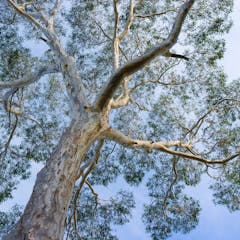
Articles on Plants
Displaying 1 - 20 of 328 articles

This episode explores how colonial history has affected what we plant and who gets to garden. We also discuss practical gardening tips with an eye to Indigenous knowledge.

Foxtails can hook onto your pet’s skin and may cause redness, swelling and infection.

There appear to be two possible explanations for circular patterns with central depressions in Pleistocene deposits on the Cape coast.

Most of us just take it for granted. But bark is one of the most complex parts of a tree and has many different jobs to do.

A coastal scientist explains why marshes, mangroves and other wetlands can’t keep up with the effects of climate change, and how human infrastructure is making it harder for them to survive.

A new study shows how front yards can serve as windows into the inner lives of their residents – and their feelings about their home, neighborhood and city.

Rock dust is only part of the story of soil. Living creatures, many of them too tiny to see, keep that soil healthy for growing everything from food to forests.

The US Department of Agriculture has updated its plant hardiness zone map, which shows where various plants will grow across the country. Gardeners should take note.

Their incredible resilience means they are becoming part of the UK landscape.

Vegan foods are considered by most consumers to have no ingredients of animal origin, but they may actually contain milk proteins.

Trees – and all plants – harvest sunlight to gain the energy they need to live and grow.

Four types of nematodes occur in soil.

Screaming mandrakes, purloined potatoes and heat-giving sunflower seeds were thought to have healing properties.

Rising air temperatures mean shorter winters and earlier springs.

What if plants in the area surrounding a nuclear reactor could act as radiation detectors, with the help of a drone?

Millions of years ago, widespread volcano eruptions in eastern Australia buried entire forests. Today, these time capsules reveal stunningly fossilised plants.

Phosphorus and nitrogen contribute to water pollution and cause harmful algal blooms. New research shows how mats of floating flower beds can take advantage of these nutrients while cleaning the water.

Hidden Peat, a new campaign from The Wildlife Trusts, encourages people to look out for peat-free alternatives and support their wider use.

Students are invited to imagine how the social, political and legal landscape for cannabis will look in the future.

Green plants produce a specific gas when under attack to both directly ward off herbivores and pathogens and indirectly lure in herbivore predators.
